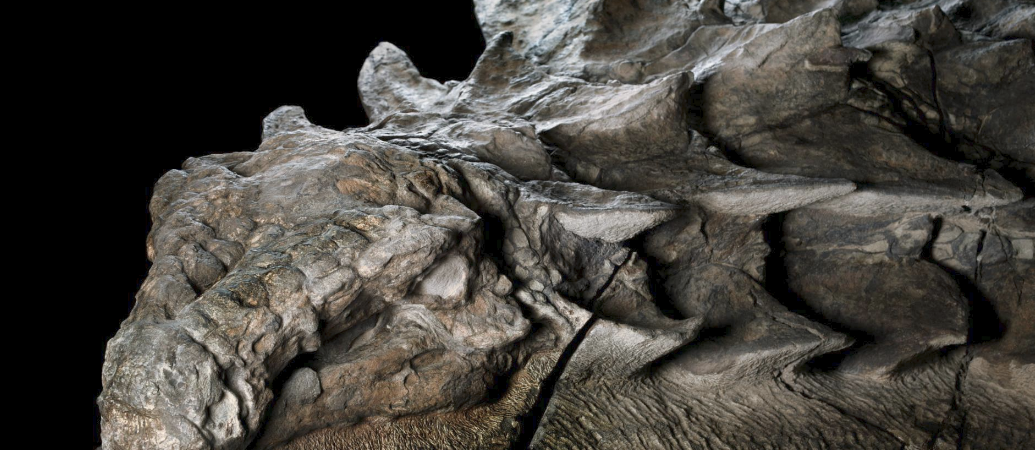
Shockingly lifelike dinosaur fossil makes
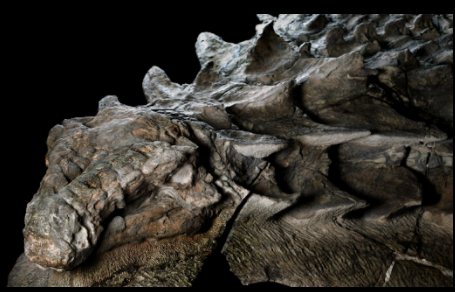
It was 18 feet long and built like a tank.
Now its mummified remains have emerged from an oil sands mine in Canada. No, it’s not the plotline of a summer blockbuster.
It’s science: breathtaking, take-you-back-in-time science.
Borealopelta (meaning «Northern shield») is a genus of nodosaurid ankylosaur from the Lower Cretaceous of Alberta, Canada.
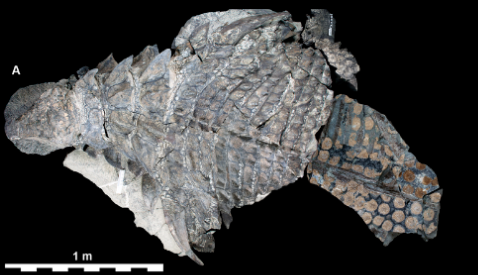
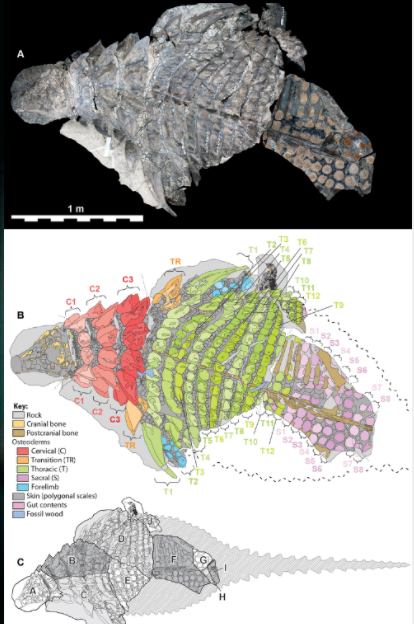
Borealopelta
(meaning «Northern shield») is a genus of nodosaurid ankylosaur from the Lower Cretaceous of Alberta, Canada.
It contains a single species, B. markmitchelli, named in 2017 by Caleb Brown and colleagues from a well-preserved specimen known as the Suncor nodosaur.
Discovered at an oil sands mine north of Fort McMurray, Alberta, that is owned by the Suncor Energy company, the specimen is remarkable for being among the best preserved dinosaur fossils of its size ever found. It preserved not only the armor (osteoderms) in their life positions, but also remains of their keratin sheaths, overlying skin, and stomach contents from the animal’s last meal. Melanosomes were also found that indicate the animal had a reddish skin tone.
The Suncor Borealopelta is remarkable for its three-dimensional preservation of a large, articulated dinosaur complete with soft tissue. While many small dinosaurs have been preserved with traces of soft tissues and skin, these are usually flattened and compressed during fossilization.
Similar-looking hadrosaurid «mummies» have a shriveled, desiccated appearance due to their partial mummification prior to fossilization.
The Suncor specimen, however, appears to have sunk upside-down onto the sea floor shortly after its death, causing the top half of the body to be quickly buried with minimal distortion.
The result is a specimen that preserves the animal almost as it would have looked in life, without flattening or shriveling.
The Suncor specimen preserved numerous closely spaced rows of small armor plates, or osteoderms, lining the top and sides of its broad body.
From the shoulders protruded a pair of long spines, shaped like the horns of a bull. Study of the pigments present in remnants of skin and scales suggest that it might have had a reddish-brown coloration in life, with a countershaded pattern that was used for camouflage.
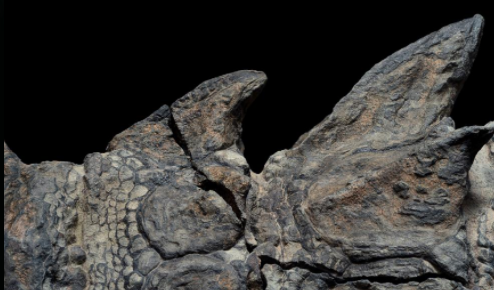
The nodosaur was found in 2011. An unsuspecting excavator operator uncovered the historic discovery while digging in an oil sands mine, according to the museum’s news release about the exhibit.
Six years and 7,000 painstaking reconstruction hours later, and the nodosaur was ready to meet the public. National Geographic says the mummified nodosaur weighs 2,500 pounds, not far off its 3,000-pound fighting weight estimated by experts.
Scientists think this nodosaur may have been swept away by a flooded river and carried out to sea, where it eventually sank.
Over millions of years on the ocean floor, minerals took the place of the dinosaur’s armor and skin, preserving it in the lifelike form now on display.
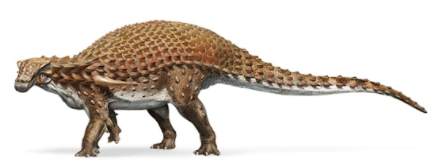
A similarly horned species of dinosaur was recently identified at a Museum in Toronto.
That cousin fossil, originally found in Montana, also contained soft tissue such as scales and parts of horn, but that dinosaur’s remains are nowhere near as lifelike as the Alberta nodosaur.
The new nodosaur exhibit opened to the public this week.
